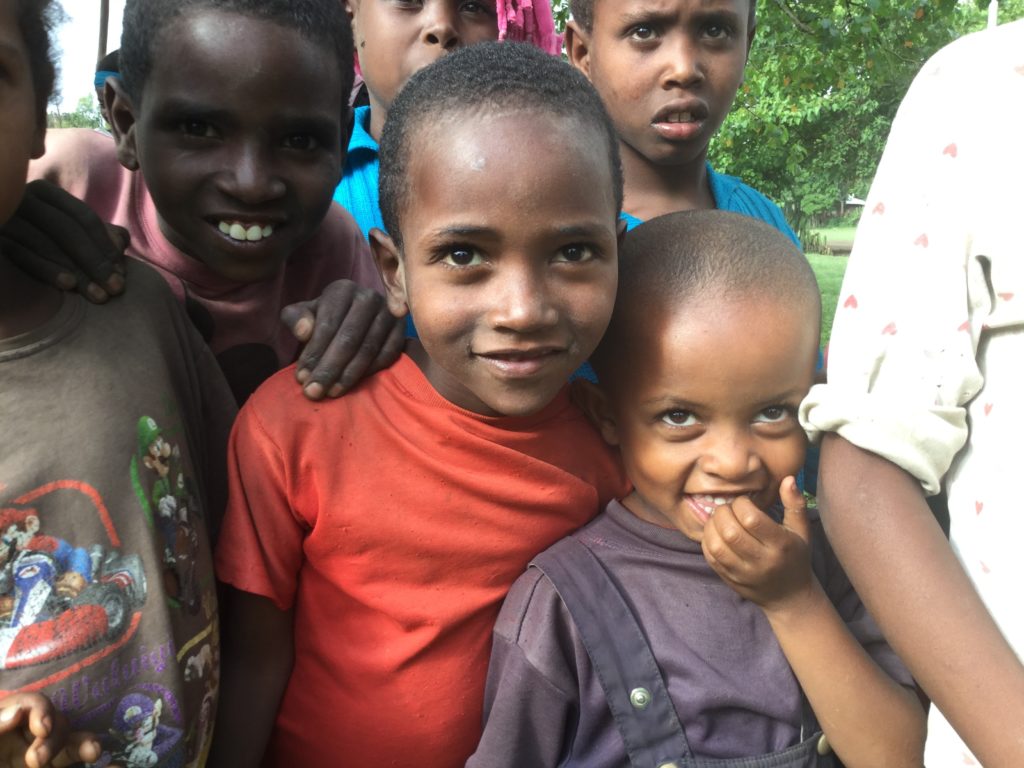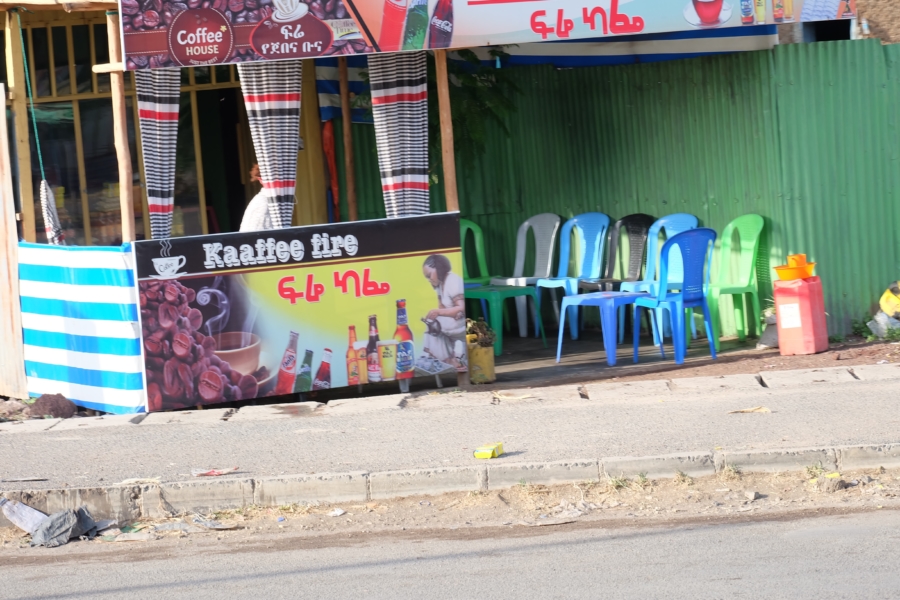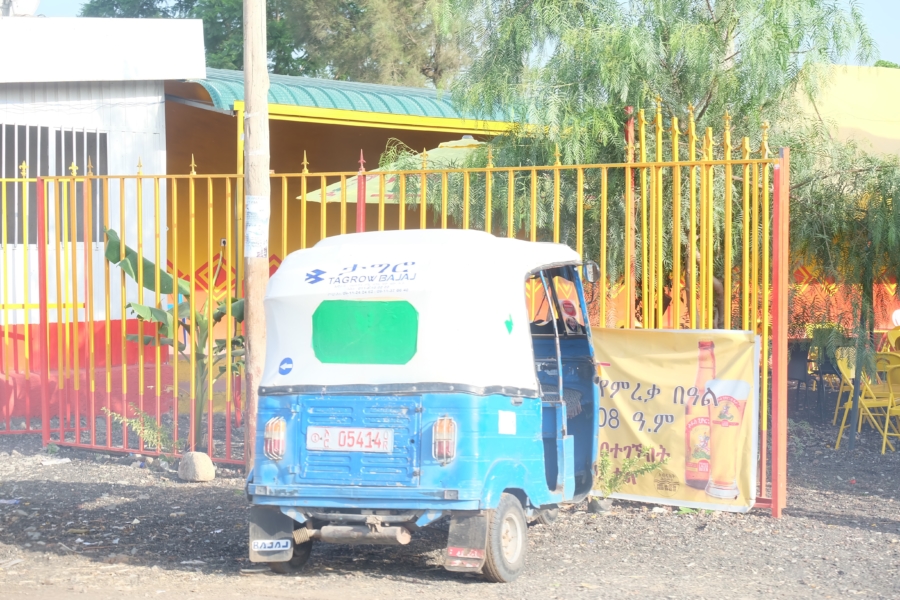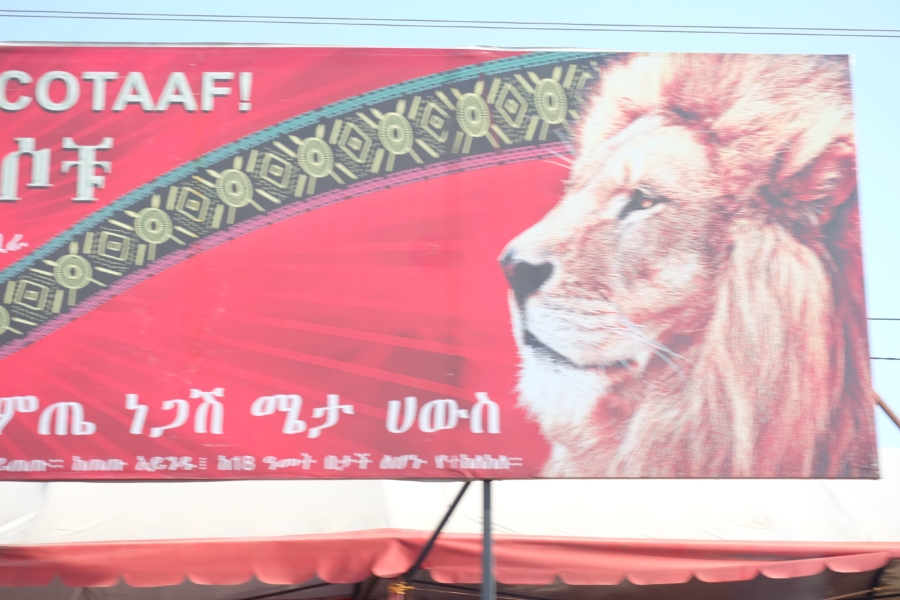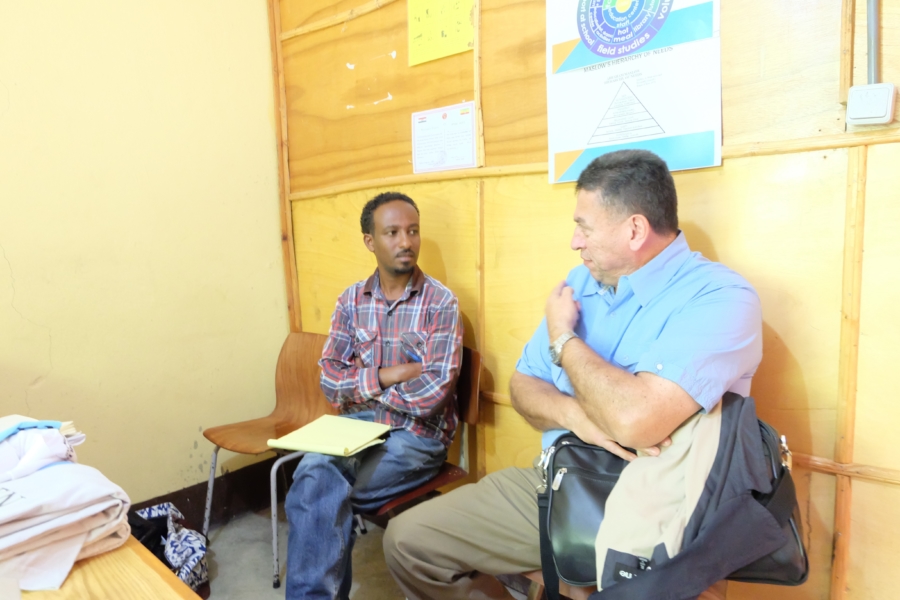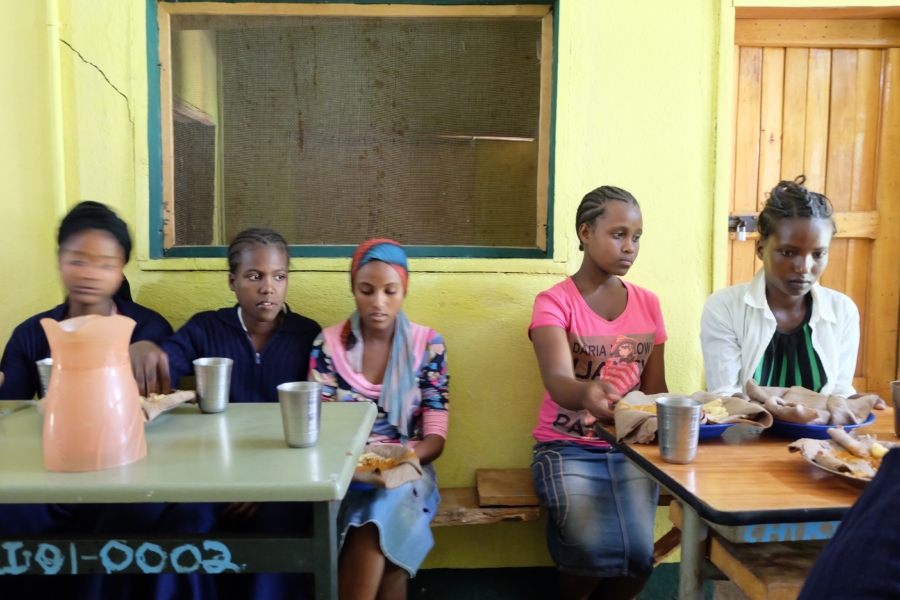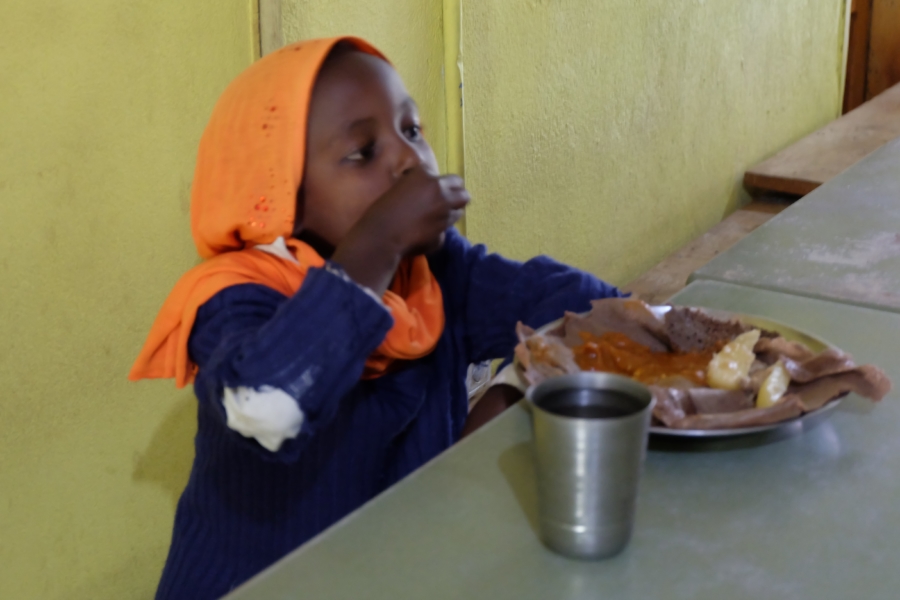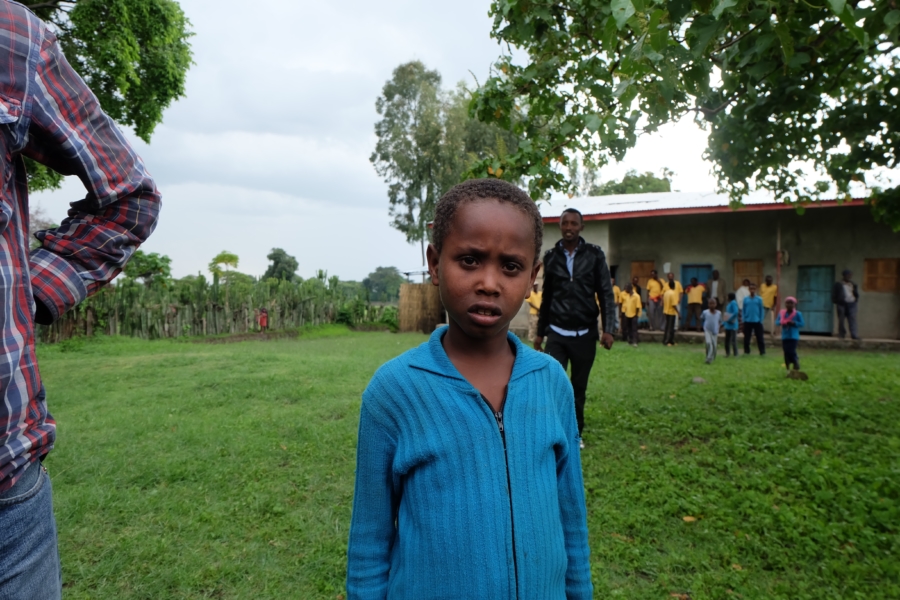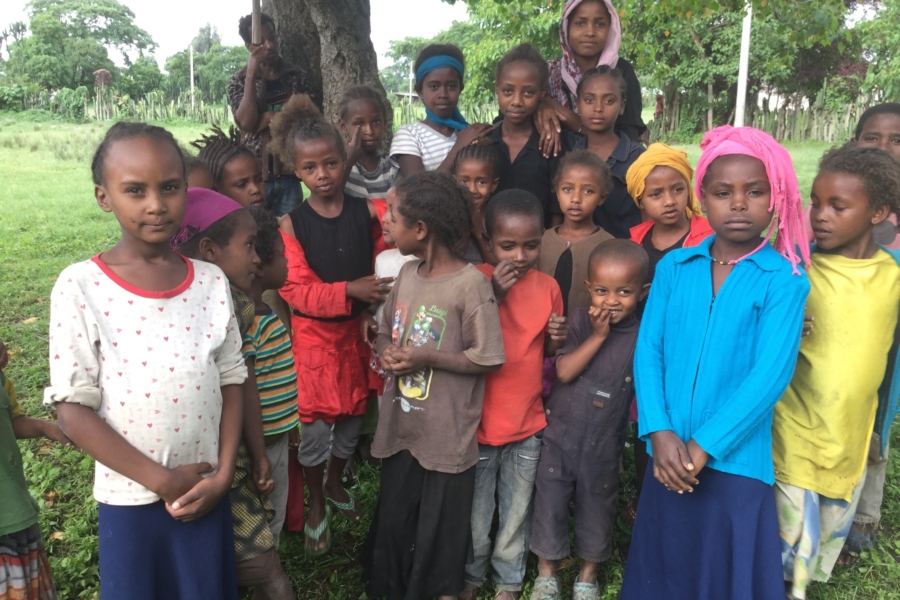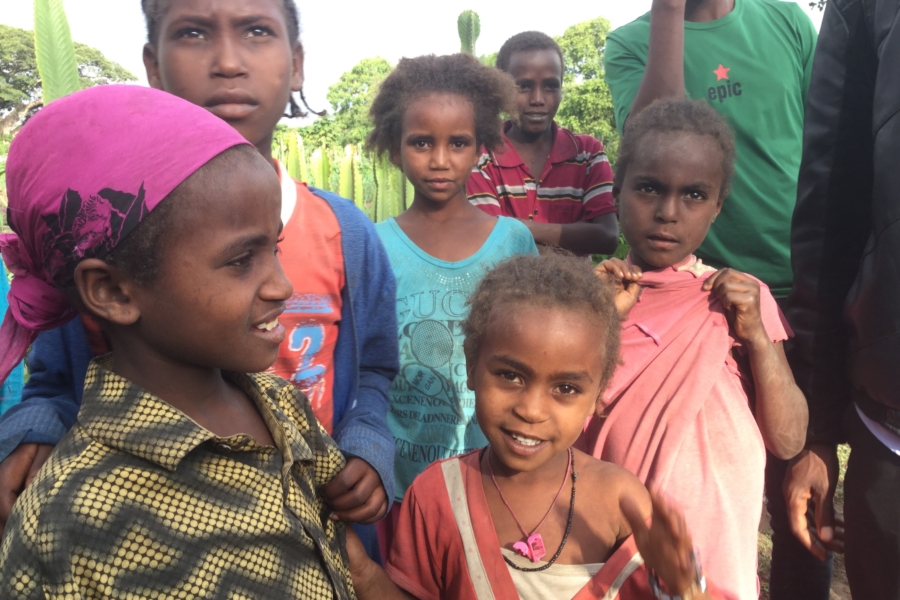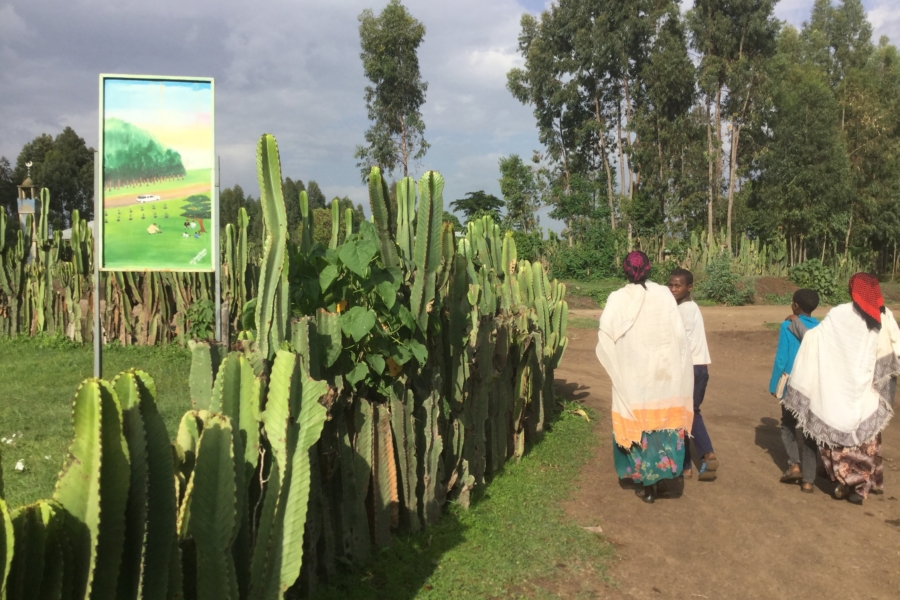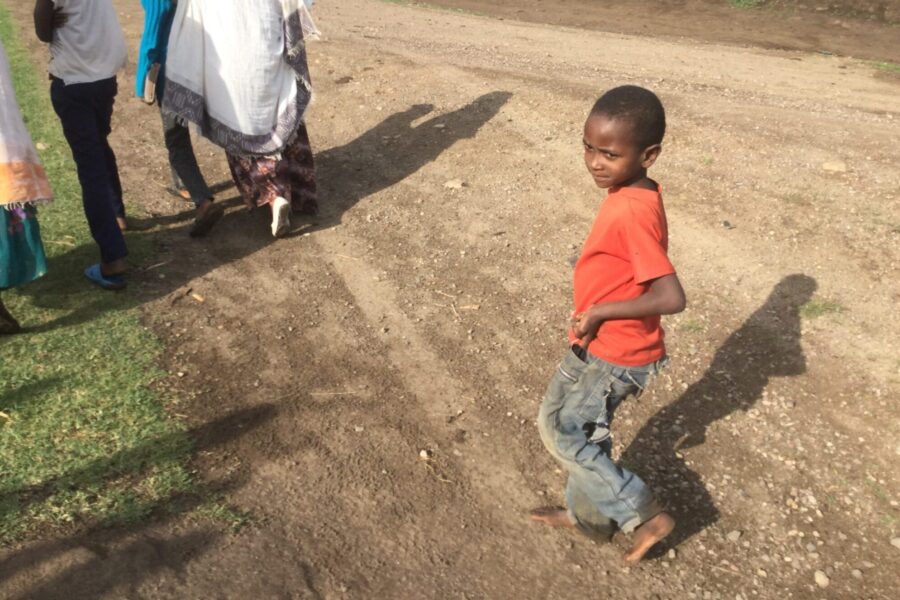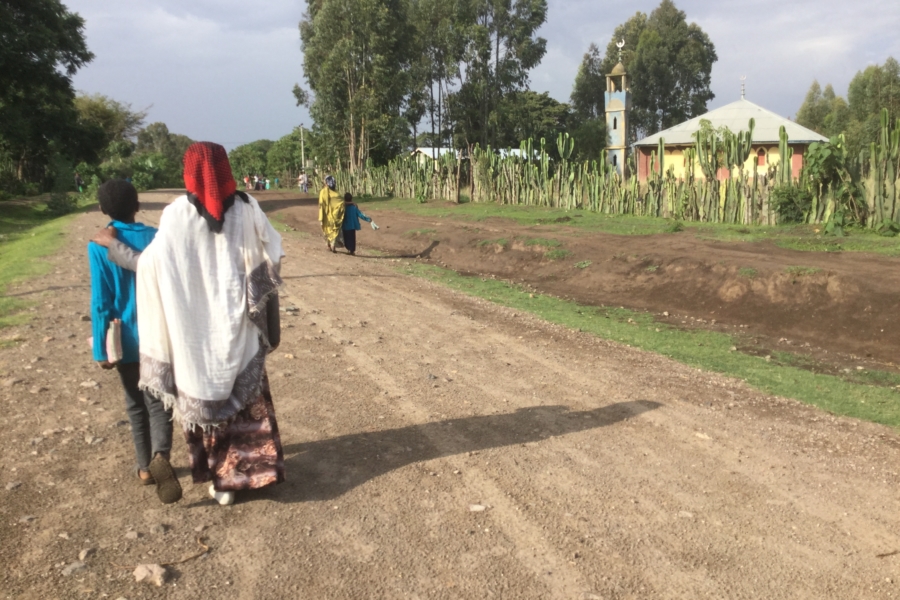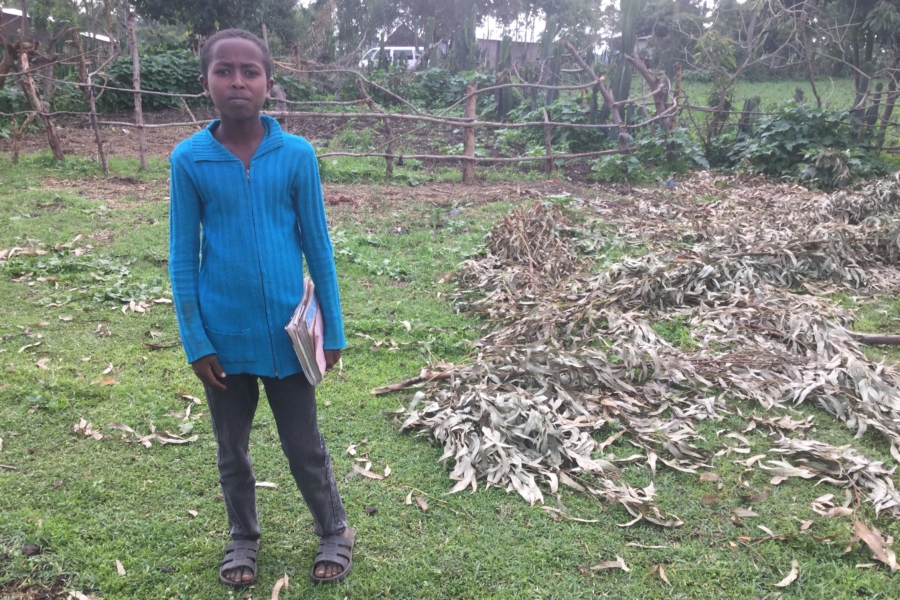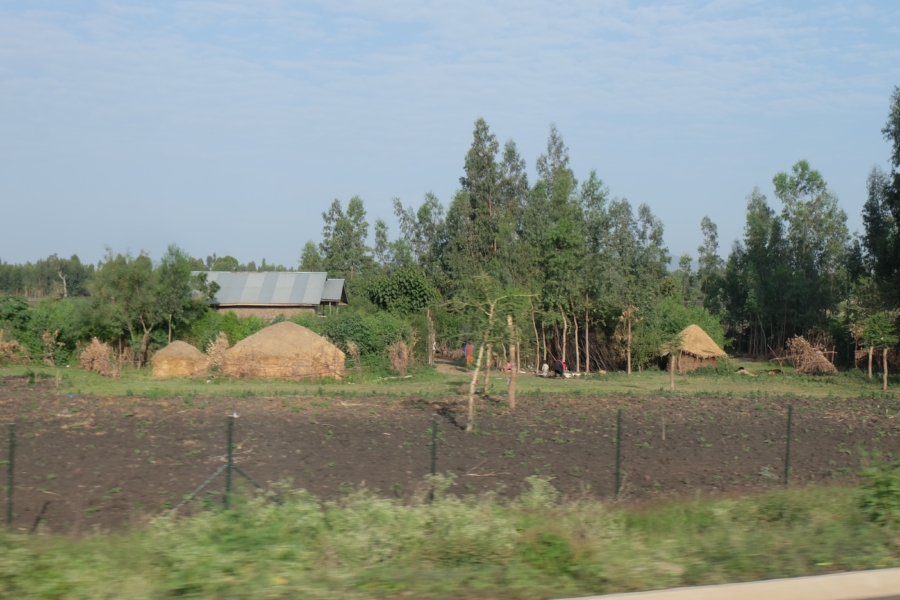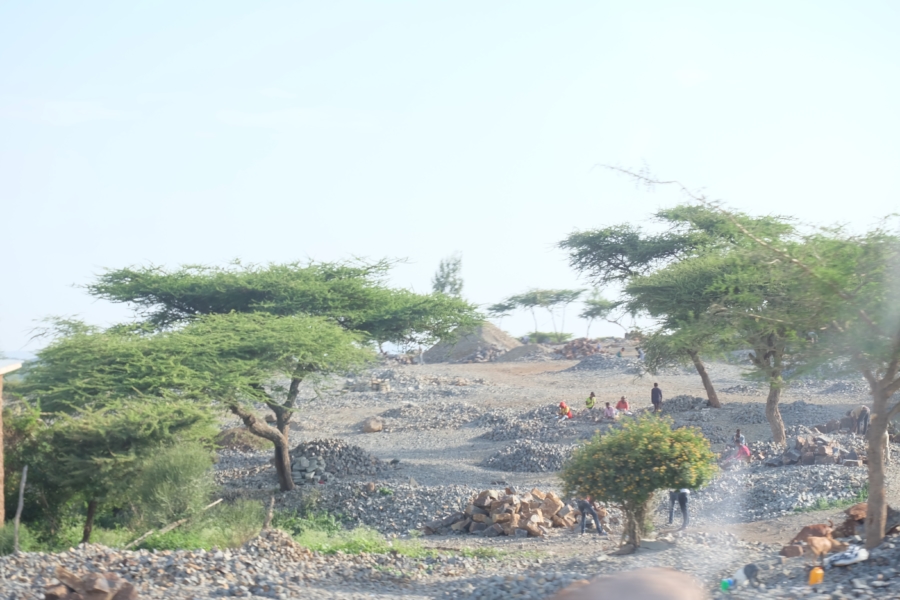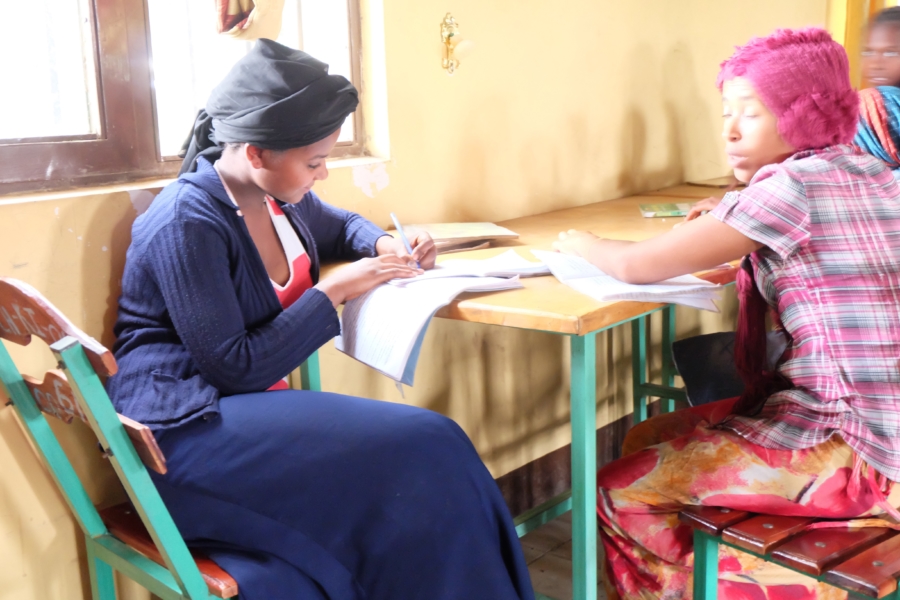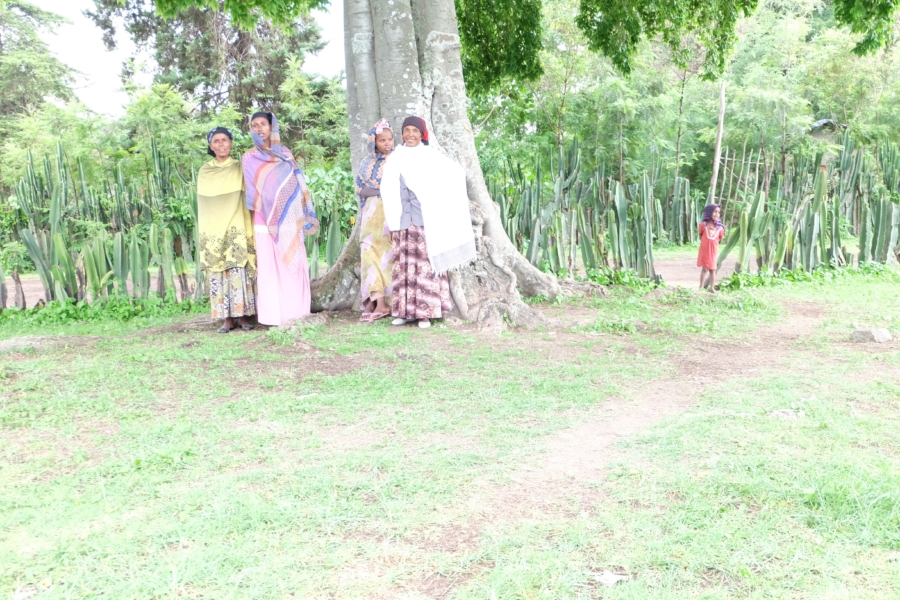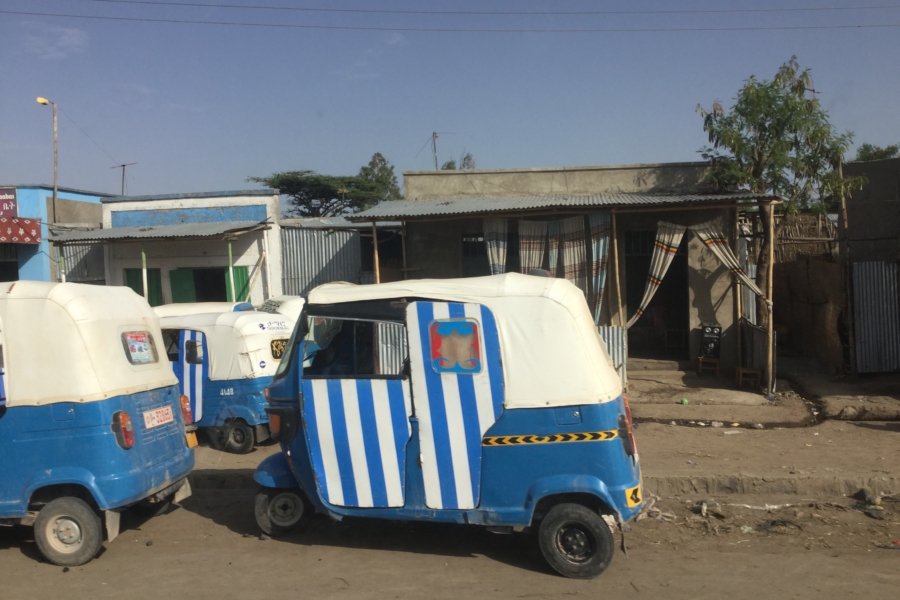Mirror images
Most of us don’t remember the first time we ever saw ourselves. In the West, babies encounter mirrors, camera lenses and video cameras from birth. And the self-imagery just becomes part of our life, for the rest of our lives. But in rural Ethiopia, seeing yourself is a rare experience.
We discovered just how magical it is to see your own face when we entered the Kids Hope compound outside Shashamane, Ethiopia.
We discovered just how magical it is to see your own face when we entered the Kids Hope compound outside Shashamane, Ethiopia. We had brought along our smartphones and tablets, and the children were entranced when we turned the screens to let them see themselves as we took videos and pictures.
It was, I discovered, a great way to break the ice and make friends. The kids called us “Fringey,” slang for foreigner, and clamored to see themselves on screen over and over again. They giggled intensely, smiled, made faces and waved, following us around and crowding into each shot to make sure they were captured on screen.
It was one of the few truly bright moments we had on our trip through Africa’s most impoverished communities.
A place called Hope
The city of Shashamane is about four hours from the metropolis of Addis Ababa. The road between the two cities is decent, and the landscape is, in places, beautiful. Flowers and grain grow along the roadside and often, the view becomes verdant and serene, with cows and donkeys grazing in pastures.
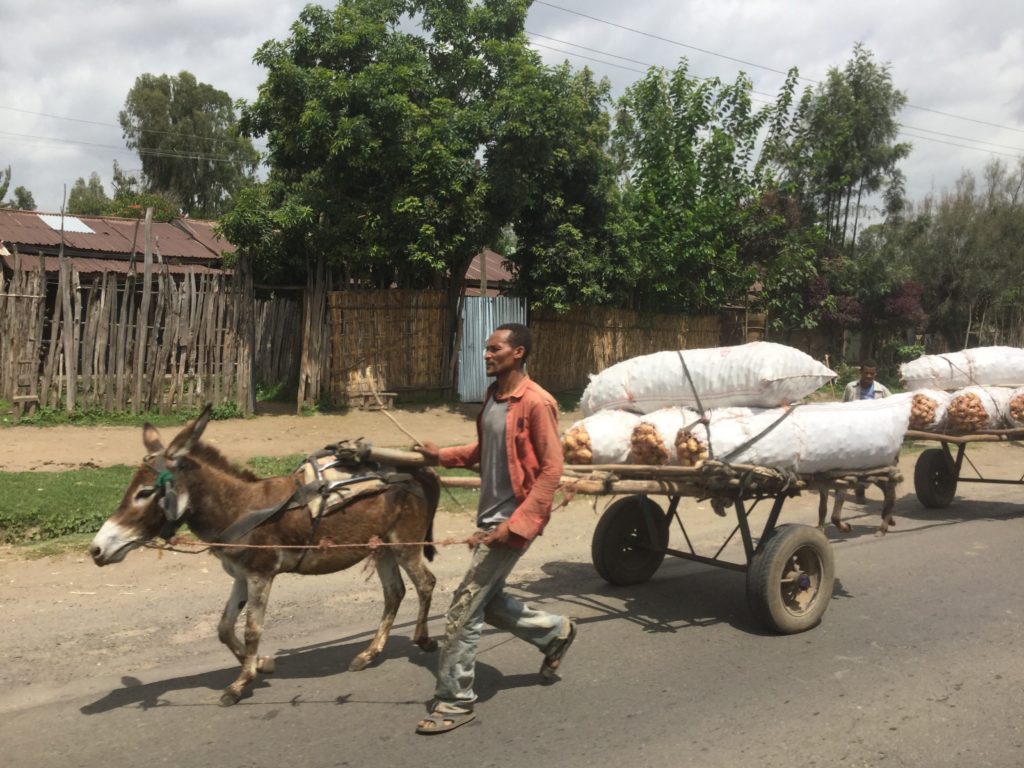
Agriculture is some of the only work in rural Ethiopia.
Outside of the largest cities, most Ethiopians use these donkeys for transportation—they pull carts full of water, sticks used for construction, and anything else that needs to be hauled. The lack of modern transportation, as I would discover, is one of the largest obstacles for anyone living on the outskirts of town.
Shashamane itself has a small city center, but we’re headed to the rural area about three miles from it. Our destination is Kids Hope Ethiopia, a five-acre compound supported by Canadian Humanitarian, a child sponsorship organization based in Canada.
There are currently 17 Children Incorporated sponsored children who attend Kids Hope programs. Since school isn’t free in Ethiopia, Kids Hope registers the children for school, pays their tuition and provides uniforms, school supplies and transportation to school.
One of the many benefits of the program is that it does the legal legwork to make Kids Hope administrators the official co-guardians of the children. That gives the children extra legal protection, which is often vital for those who have been orphaned or abandoned.
It was one of the few truly bright moments we had on our trip through Africa’s most impoverished communities.
Beyond providing education, Kids Hope gives the children, ages 3 to 12, hot meals, showers, musical instruction, a place to do their laundry and get help from their peers so that they can learn to take care of themselves. Their guardians (very few children here have parents) are also provided with training to learn skills or start businesses. On top of that, health and dental care are provided, and Kids Hope has big plans for the future, too.
Beating the famine
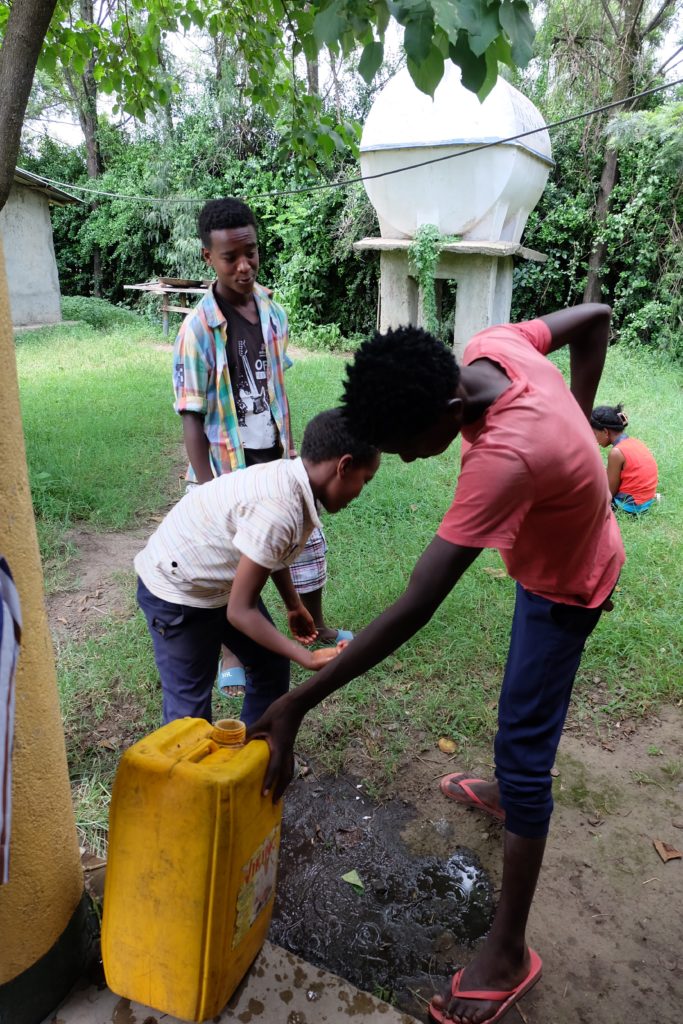
Children wash their hands before having lunch.
The Kids Hope compound sits on a comparatively large piece of land. It’s good, viable land, perfect for cultivating food. Bisrat Sime, who oversees the program, is working on starting a learning garden so that the children can have hands-on experience with agriculture—a skill that could change the course of their lives.
Anyone who remembers the 1980s Ethiopian Famine understands how important agriculture is here. Good soil isn’t enough—effective farming practices are vital to making the crops grow and supply a nation of 94 million people.
The obstacles begin at even the most basic level: there aren’t any seeds, tools or fertilizers available in Shashamane. So we talked to Bisrat about getting Children Incorporated’s help in funding and supplying the project.
It starts with a small garden, but if these children can learn the principles of sustainable agriculture, they will grow into adults who can help a nation feed itself. It’s a laudable goal, and thinking about it gives me hope as we continue through Shashamane.
Isolation
The poverty here is more obvious than what we saw in Bolivia and Kentucky. Families use wells or boreholes in the ground to pump water, which is still in short supply—clean water, even more so. The children who aren’t lucky enough to be in the Kids Hope program had tattered clothes and worn shoes.
They’re also isolated. Because of the distance between homes and facilities, most of the children at Kids Hope live in small group homes so they can get to school and attend the center. Not only are they without parents, but most of the time they’re away from any other family as well, choosing to go to school – and eat – or to stay at home and slowly deteriorate. These children go home to their families on the weekends; only five of the 17 sponsored children live close enough to stay at home all week. The others stay in group homes, rather than making the long journey to school every day.
While the countryside is lovely from the front seat of a truck, it’s intimidating on foot. And the residents here feel far more isolated than those we met in Kentucky, who lived farther away but had access to both cars and paved roads, or even those living in the mountains of Bolivia.
Moving on
While poverty hits harder in Shashamane than it does in the city slums, life is easier in certain ways. There’s more land, more freedom and independence, less crowding and less of the disease that comes with overpopulation.
The flipside is that there are fewer services available. What the children here need most is an education, and most of Children Incorporated’s funds in Shashamane go directly towards sending children to school. Getting them motivated—and healthy—enough to study and succeed is secondary to just finding the money to get them through the school’s door. Every time we accomplish that, we increase the chances of Ethiopia’s economic stability in the near future.
That’s how I’ve been seeing these children as a whole —individuals, yes, but also the collective future leaders of their nation. As we prepare to move on to Nairobi in Kenya, I find myself wondering how they see themselves. Peering into my tablet screen, seeing their own faces in action for the first time, do they see what I see? Making sure they do may be the key to victory in the fight against poverty here.
***
HOW DO I SPONSOR A CHILD IN ETHIOPIA?
You can sponsor a child in Ethiopia in one of three ways – call our office and speak with one of our sponsorship specialists at 1-800-538-5381, email us at sponsorship@children-inc.org, or go online to our donation portal, create an account, and search for a child in Ethiopia that is available for sponsorship.

